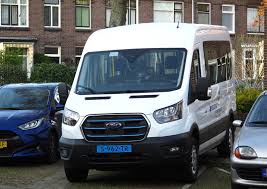Ford Motor Company is taking further actions to deliver a profitable, capital-efficient and growing electric vehicle business and add even more propulsion choices that generate lower CO2 emissions.
The plan includes adjusting the company’s North America vehicle roadmap to offer a range of electrification options designed to speed customer adoption — including lower prices and longer ranges. In its fully electric portfolio, Ford will prioritize the introduction of a new digitally advanced commercial van in 2026, followed by two new advanced pickup trucks in 2027 and other future affordable vehicles. Ford also realigned its U.S. battery sourcing plan to reduce costs, maximize capacity utilization, and support current and future EV production.
“We are committed to innovating in America, creating jobs and delivering incredible new electric and hybrid vehicles that make a real difference in CO2 reduction,” says Jim Farley, Ford president and CEO. “We learned a lot as the No. 2 U.S. electric vehicle brand about what customers want and value, and what it takes to match the best in the world with cost-efficient design, and we have built a plan that gives our customers maximum choice and plays to our strengths.”
The EV market is rapidly evolving as Chinese competitors leverage advantaged cost structures including vertical integration, low-cost engineering, multi-energy advanced battery technology and digital experiences to expand their global market share.
Today’s EV consumers are more cost-conscious than early adopters, looking to EVs as a practical way to save money on fuel and maintenance, as well as time by charging at home. This, coupled with scores of new EV choices hitting the market over the next 12 months and rising compliance requirements, has amplified pricing pressures.
Ford now plans to leverage hybrid technologies for its next three-row SUVs. The company will take a special non-cash charge of about $400 million for the write-down of certain product-specific manufacturing assets for the previously planned all-electric three-row SUVs, which Ford will no longer produce. These actions may also result in additional expenses and cash expenditures of up to $1.5 billion.
The rollout of Ford’s next generation of electric vehicles begins with a commercial van that will be assembled at Ford’s Ohio Assembly Plant starting in 2026. Ford has a strong commercial electric vehicle presence, led by E-Transit, which is America’s best-selling electric van suitable for businesses of all sizes.
In 2022, Ford established a skunkworks team in California focused on changing the company’s approach to next-generation vehicle development and bending the cost curve on EVs. The team takes a systems-integration approach across design, engineering, supply chain and manufacturing to fundamentally rethink the full vehicle.
The first affordable vehicle off this new platform will be a mid-size electric pickup launching in 2027 that is expected to cater to customers who want more for their money — more range, utility and useability.
Ford is retiming the launch of its groundbreaking electric truck code-named “Project T3” to the second half of 2027. Taking all the learnings from F-150 Lightning customers, the truck will offer features and experiences never seen on a Ford truck, including upgraded bi-directional charging capability and advanced aerodynamics. The truck will be assembled at BlueOval City’s Tennessee Electric Vehicle Center.
Ford also will develop a new family of electrified three-row SUVs that will include hybrid technologies that can offer breakthrough efficiency, performance benefits and emissions reductions versus pure gas vehicles and extend the range of the vehicle on road trips.
In addition, the next-generation F-Series Super Duty pickup will have a range of propulsion options, building on Ford’s hybrid truck sales leadership with the F-150 and Maverick.
Ford has realigned battery sourcing to support both EV and other emerging applications to unlock cost reductions, improve capital efficiency, and qualify for Inflation Reduction Act production and consumer tax credits.





